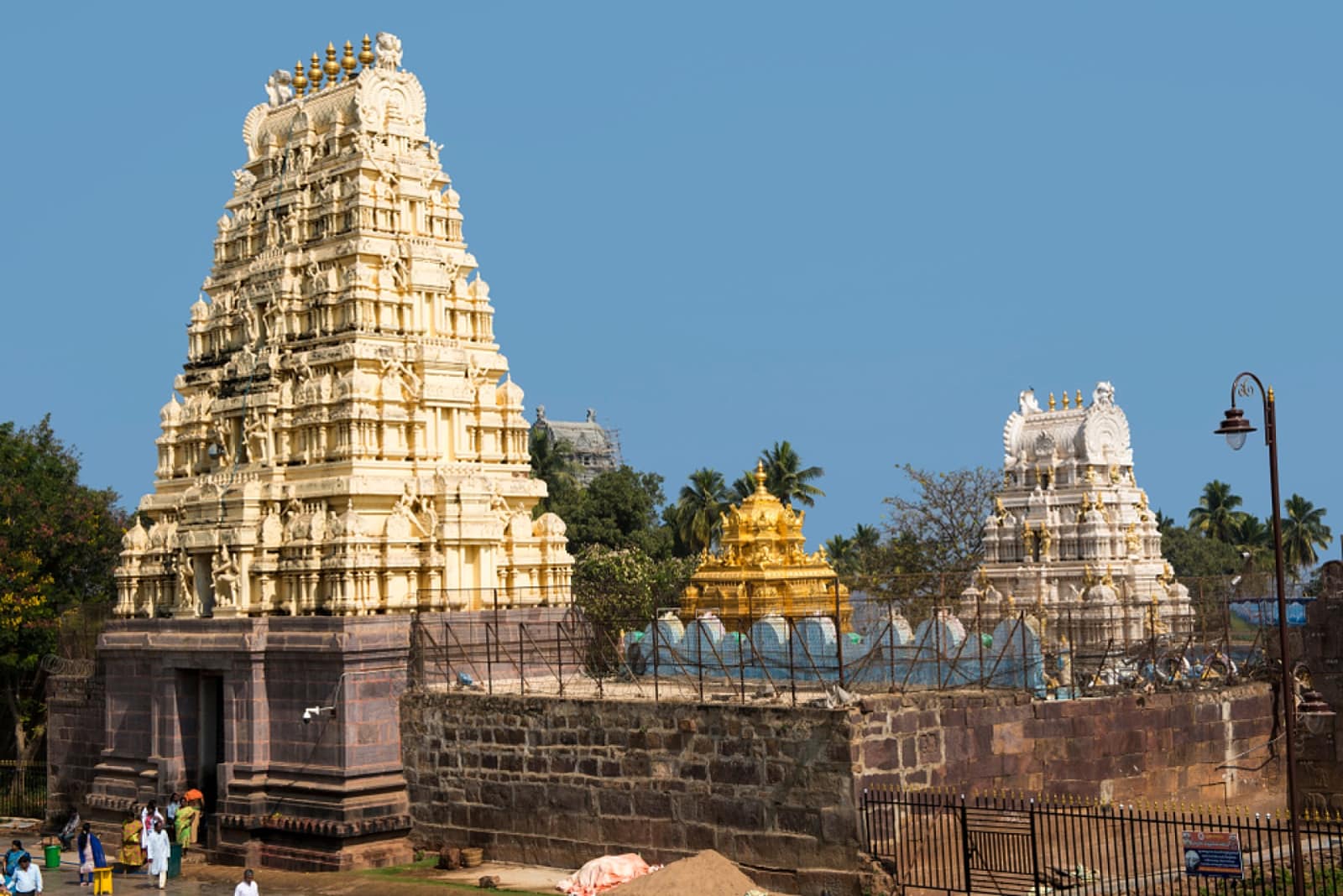I’ll admit it—I got lost. Badly. My auto-rickshaw driver in Hyderabad had assured me he knew the way to Srisailam, but after three hours of winding through increasingly narrow roads, we both realized he’d taken a wrong turn somewhere near Nallamala Hills. As the sun began to dip behind the mountains, casting long shadows across the forest, I decided to get out and walk the last stretch.
That’s when I heard it—the distant sound of bells mixed with chanting, carried on the evening breeze. Following the sound like a lifeline, I emerged from the forest just as the first stars appeared in the sky, and there it was: Mallikarjuna Temple, glowing softly in the twilight, perched dramatically on a hill overlooking the Krishna River. What was supposed to be a simple day trip had turned into something far more profound—a journey that would change how I understood devotion itself.
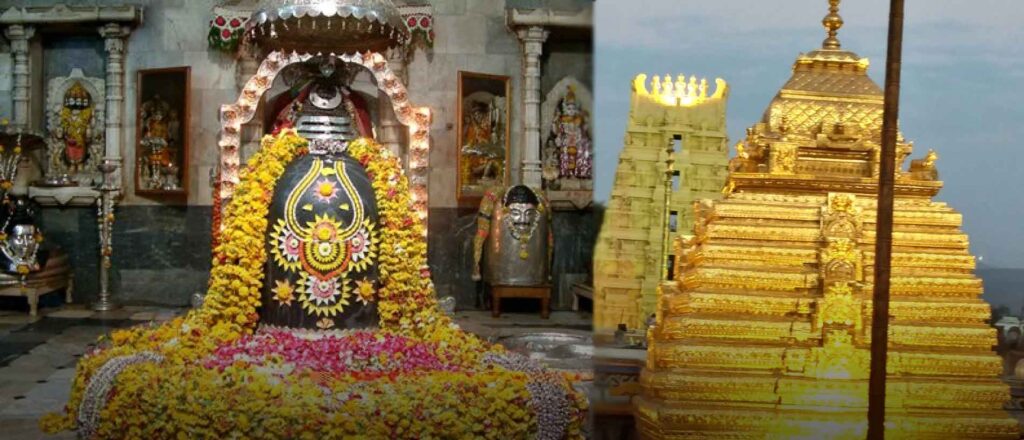
First Impressions: Mallikarjuna Temple
Most people think of temples as buildings, but Mallikarjuna feels more like a living organism. As I removed my shoes at the entrance, the cool stone beneath my feet was the first surprise—the marble wasn’t smooth like in city temples, but slightly rough, worn by centuries of bare feet. The air carried multiple scents: jasmine from the flower stalls, sandalwood from the incense, and something earthy I couldn’t identify at first (later I learned it was the special mud used in rituals).
What struck me immediately was the absence of touristy chaos. Unlike the crowded temples I’d visited elsewhere in India, Mallikarjuna had a quiet intensity. People moved with purpose, not haste. An elderly woman in a faded blue sari caught my eye and gestured for me to follow her. Without a word, she led me to a small shrine tucked away from the main complex where she showed me how to properly offer flowers—not by tossing them, but by placing each one gently with both hands, as if tucking in a child.
“Temples aren’t for taking pictures,” she finally said in Telugu, her voice barely above a whisper. “They’re for listening.” Then she disappeared into the crowd, leaving me with that simple truth to ponder as I continued my exploration.
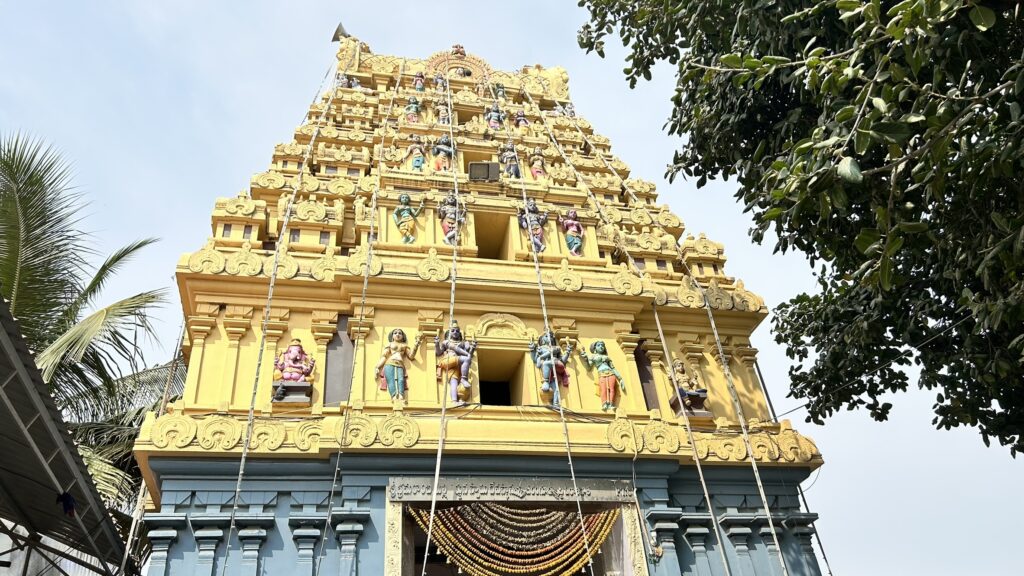
The Mountain That Holds the Divine
Mallikarjuna’s location isn’t accidental—it’s strategic. The temple sits atop a hill that’s actually part of the Srisailam reserve forest, with the Krishna River flowing dramatically below. What most guidebooks don’t tell you is that this hill is considered the physical manifestation of Lord Shiva himself. The entire mountain is sacred, not just the temple structure.
I learned this from a local priest named Venkatesh, who noticed me studying the temple map with confusion. “You’re looking at it wrong,” he said, taking the map from my hands. With his finger, he traced not just the temple complex, but the entire surrounding area. “The mountain is Shiva’s body. The river is his energy flowing downward. The temple is just where we humans can touch him.”
He took me on an impromptu tour of the less-visited areas, showing me how the temple architecture mirrors the natural formations. “See how that rock overhang resembles a hood?” he pointed to a natural formation above the main sanctum. “That’s why we don’t need to carve cobras here—the mountain provides them naturally.”
As we walked, he explained that Mallikarjuna is one of only two Jyotirlingas located on a riverbank (the other being Trimbakeshwar in Maharashtra). “The Krishna River isn’t just water,” he said. “It’s the liquid form of Shiva’s compassion, flowing down to bless the world.”
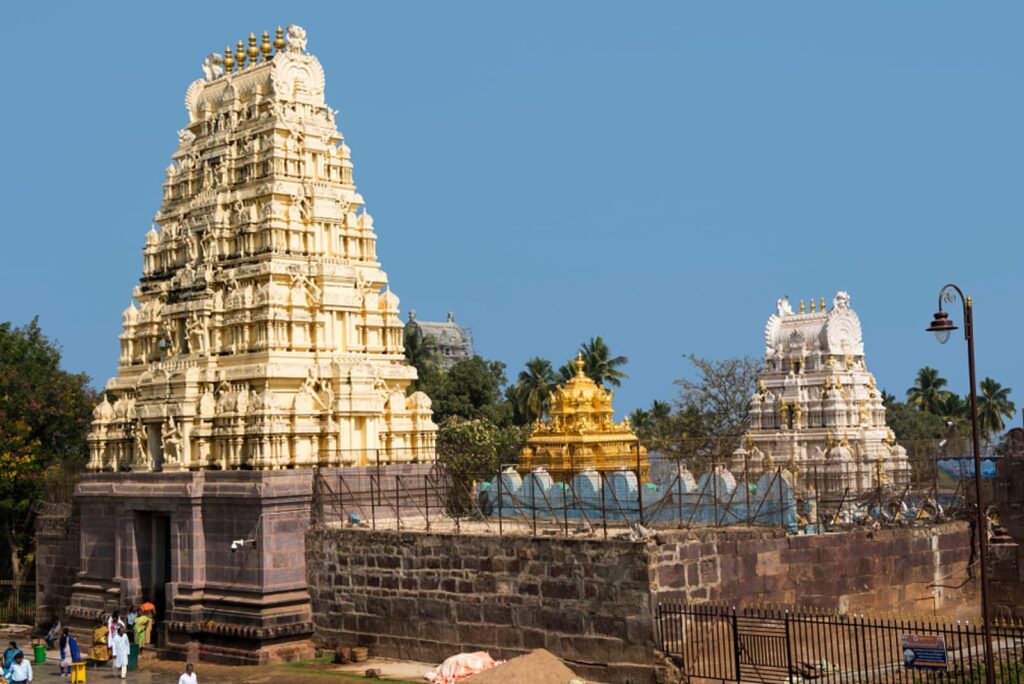
The Living Rituals: Not Just for Show
Most temple guides focus on the architecture, but what truly fascinated me were the rituals that happen daily, unchanged for centuries. I was lucky enough to witness the pre-dawn ritual known as “Thomala Seva”—the offering of flowers directly onto the Shiva lingam.
At 3:30 AM, I joined a small group of devotees in the inner sanctum. The air was cool and thick with anticipation. The head priest, wearing only a simple dhoti despite the chilly mountain air, moved with practiced precision. What surprised me most was the simplicity of the ritual—no elaborate chanting, just the sound of water being poured and the soft rustle of flower petals.
As the first rays of light began to filter through the temple windows, illuminating the ancient stone carvings, the priest turned to me and said, “This isn’t performance. This is conversation.” He explained that each movement has meaning: the clockwise pouring of water represents the cycle of time, the specific arrangement of flowers tells a story, and the timing of each action corresponds to cosmic rhythms.
Later that day, I sat with a group of local women preparing the flower offerings. They worked with quiet concentration, their fingers moving with practiced precision as they sorted marigolds by shade and size. One woman, Lakshmi, noticed my curiosity and invited me to join them. As I clumsily tried to arrange the flowers, she laughed gently. “It’s not about perfection,” she said. “It’s about attention. Shiva sees the heart behind the offering, not just the flowers.”
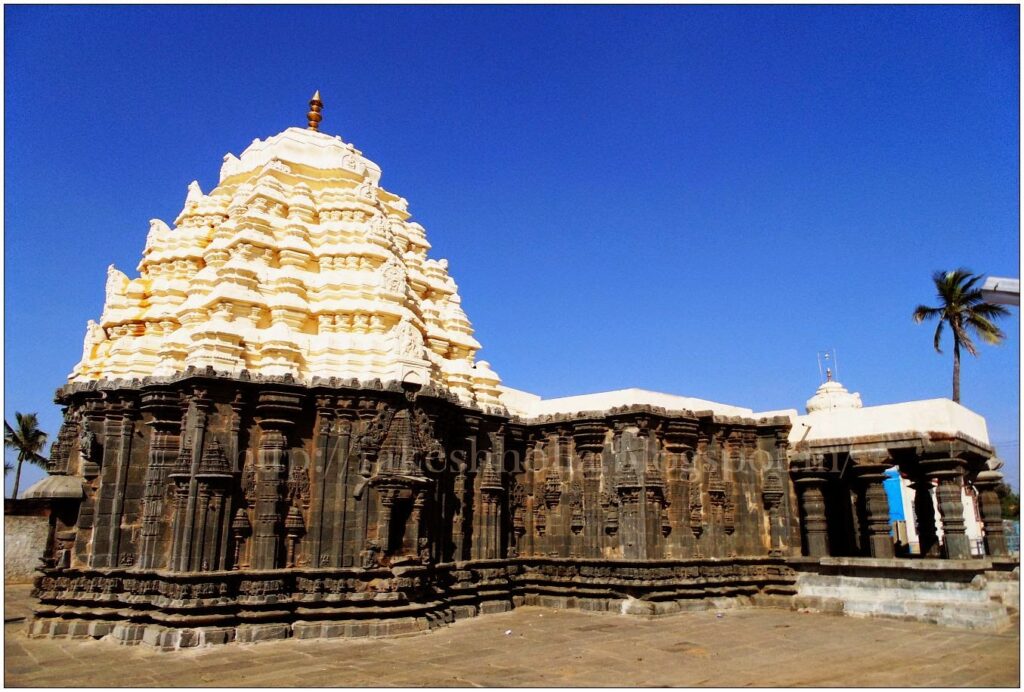
The Secret Garden: Where Stories Grow
Behind the main temple complex lies a garden most visitors never see—a hidden space where medicinal herbs and sacred plants grow. I discovered it by accident when I followed the sound of water to what appeared to be a dead end.
An elderly gardener named Rama Rao was tending to the plants, his hands moving gently among the leaves. “This isn’t just a garden,” he explained as he showed me around. “It’s a living pharmacy and a sacred text.” He pointed to different plants: “This tulsi is for purification, this bilva for devotion, this ashwagandha for strength.”
As we walked among the plants, Rama Rao shared stories that connected each plant to Hindu mythology. “This neem tree,” he said, placing his hand on the rough bark, “is where Parvati is said to have meditated for 10,000 years before winning Shiva’s heart.” He then showed me a particular vine that grows only here: “This is the ‘Shiva’s hair’ plant. It only blooms during Mahashivaratri.”
What moved me most was learning how the temple’s rituals incorporate these plants. The priest uses specific herbs in different ceremonies based on their medicinal and spiritual properties. “We don’t just worship Shiva here,” Rama Rao said. “We live with him in every leaf and petal.”
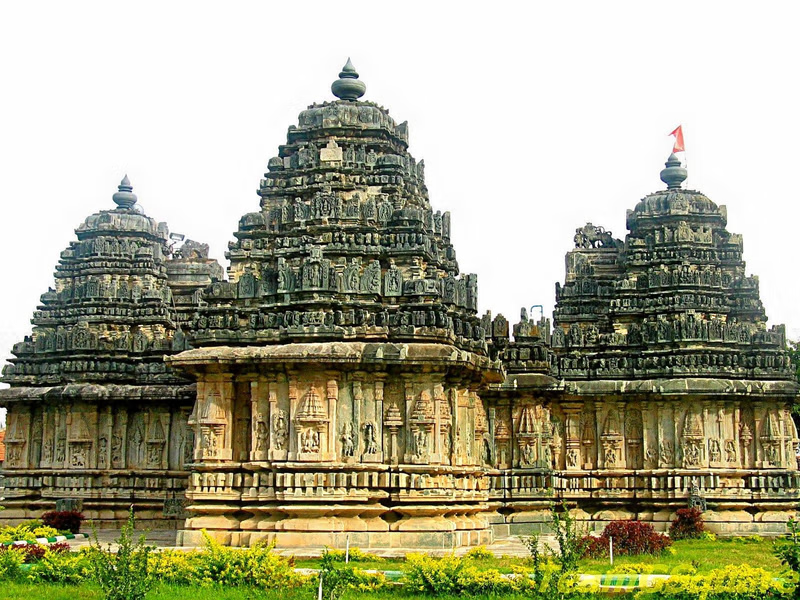
The Night I Spent in the Temple Courtyard
Most visitors leave by sunset, but I decided to stay. The temple provides simple accommodations for pilgrims who wish to experience the temple after the crowds depart. As the last tourists filed out, the temple transformed. The harsh fluorescent lights were turned off, replaced by traditional oil lamps that cast dancing shadows on the ancient walls.
Around 9 PM, I joined a group of sadhus (holy men) for an informal discussion in the courtyard. One of them, Swami Anand, noticed my camera and said, “Put it away. The real experience happens when you stop trying to capture it.”
He was right. Without the distraction of documenting everything, I began to notice details I’d missed during the day: the way the moonlight highlighted specific carvings, the different sounds of the bells at night versus day, the subtle shift in the scent of incense as the temperature dropped.
As midnight approached, the head priest invited us to witness the rare “Ratri Puja” (night worship). In the dim light of the sanctum, the rituals took on a different quality—more intimate, more personal. The priest explained that night worship connects to Shiva’s aspect as the destroyer of darkness, both literal and metaphorical.
Lying on my thin mat in the temple courtyard that night, listening to the river below and the occasional bell from the sanctum, I understood why people come here seeking transformation. The temple isn’t just a place to visit—it’s a space that changes you if you let it.
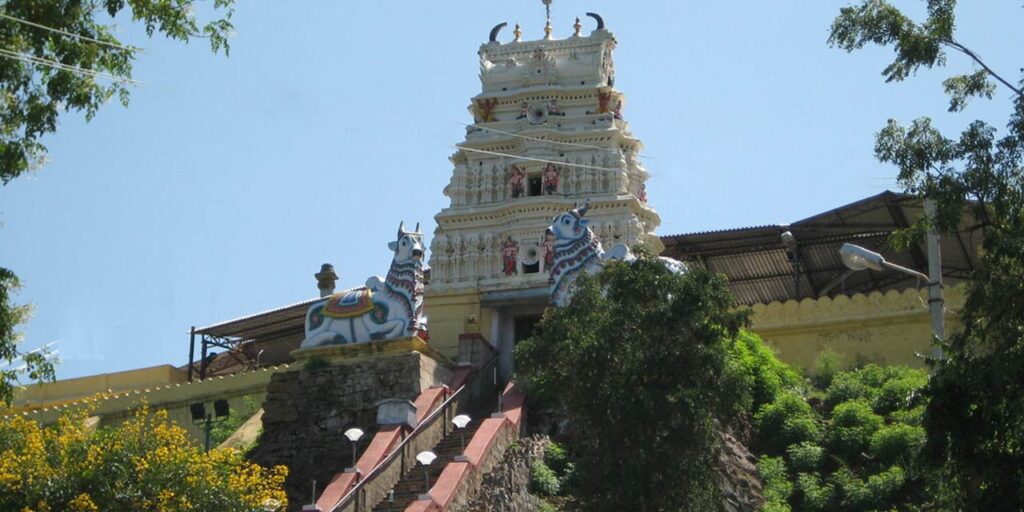
The Food That Feeds the Soul
Temple food in India varies widely, but the langar (community kitchen) at Mallikarjuna has a special character. What surprised me most was how the food connects to the temple’s geography and history.
I spent a morning with the kitchen staff, who welcomed me despite my clumsy attempts to help. The head cook, Sita Devi, explained that everything served here comes from the surrounding area: rice from the Krishna River valley, vegetables from local farms, and milk from nearby villages.
“The food isn’t just nourishment,” she said as she stirred a massive pot of rice. “It’s prasad (blessed food) that carries the energy of this place.” She showed me how they prepare the special “Pulihora” (tamarind rice) that’s unique to this temple—using tamarind from specific trees on the mountain that are considered sacred.
What moved me most was learning about the “Anna Daan” (food donation) tradition. Every day, the kitchen prepares extra food specifically for the forest dwellers and tribal communities who live in the surrounding hills. “Shiva is everyone’s god,” Sita Devi explained. “Not just those who can climb the hill to worship.”
During my stay, I was invited to share a meal with a group of tribal devotees who had walked for two days to reach the temple. Their simple offering of rice and lentils, cooked over an open fire, was the most meaningful meal I’ve ever eaten. As we ate with our hands (as is tradition), one elder shared stories of how his community has worshipped here for generations, long before the stone temple was built.
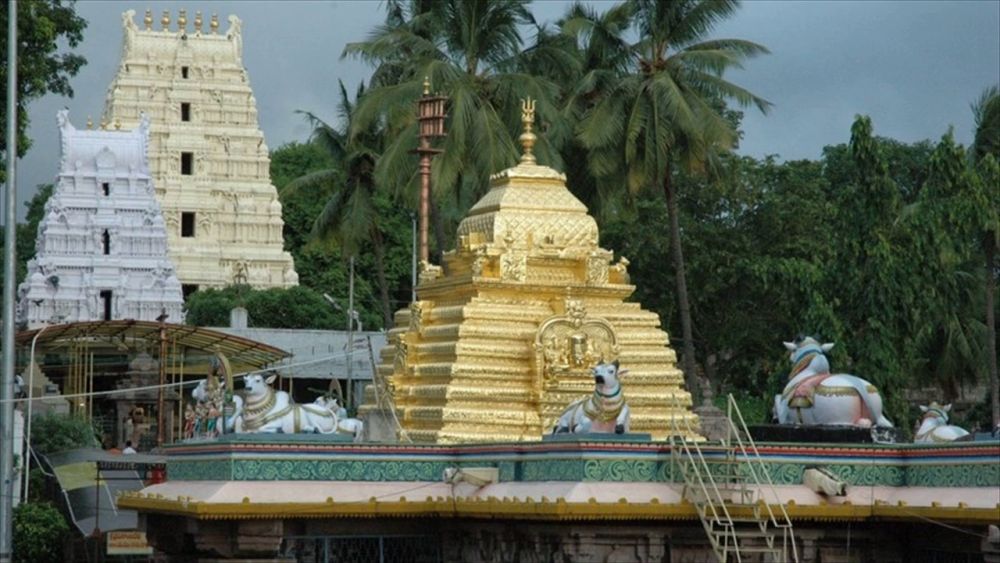
The Hidden History Most Visitors Miss
Most guidebooks focus on Mallikarjuna’s religious significance, but its historical layers run deep. I discovered this when I met Dr. Nagesh, a retired history professor who volunteers as a temple guide.
Over chai at a small shop near the temple, he shared stories that aren’t in official histories. “The current temple structure dates to the 12th century,” he explained, “but worship here goes back to at least the 3rd century BCE.” He showed me carvings most visitors overlook—subtle symbols that reveal the temple’s evolution through different ruling dynasties.
What fascinated me most was learning about the temple’s role during the Kakatiya dynasty (12th-14th century). “This wasn’t just a religious center,” Dr. Nagesh said. “It was a hub of learning, medicine, and even early forms of governance.” He took me to a rarely visited section of the temple where ancient inscriptions detail community decisions made here.
One afternoon, he introduced me to a manuscript conservator named Meera who works with the temple’s ancient texts. In a small, climate-controlled room, she showed me palm-leaf manuscripts that detail everything from temple rituals to medical treatments used centuries ago. “This knowledge wasn’t hoarded by priests,” she explained. “It was shared with anyone who came seeking healing.”
As I examined the delicate manuscripts, Meera shared a story that isn’t in any history book: during the 14th century, when the region faced a devastating drought, the temple became a center for water conservation techniques that saved countless lives. “Devotion here has always been practical,” she said. “Not just theoretical.”
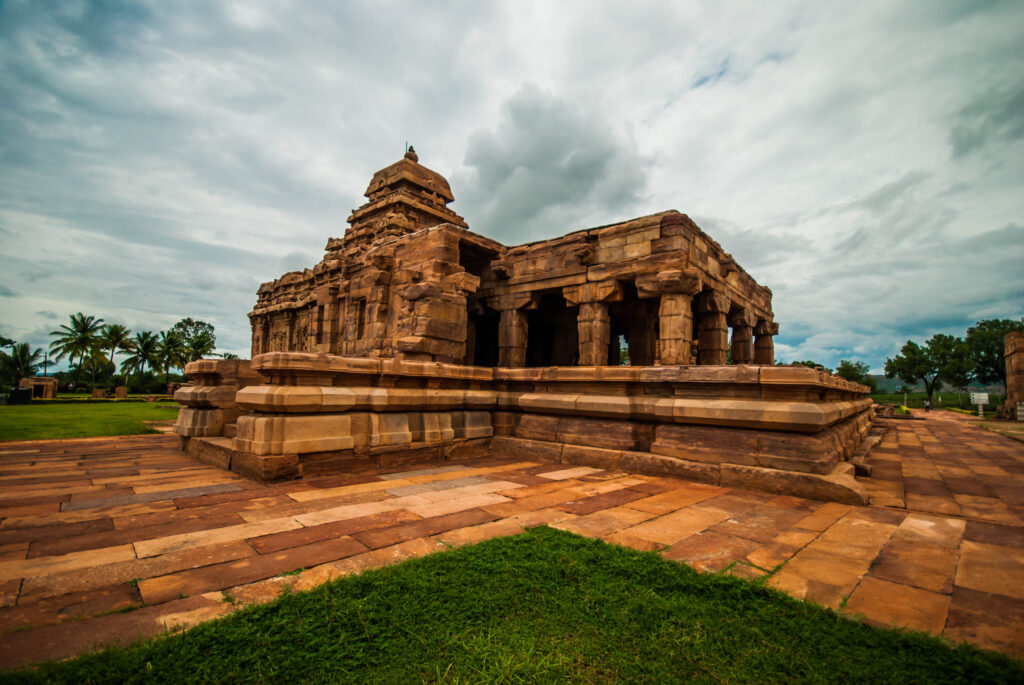
The Mist That Changed Everything
My last morning at Mallikarjuna began with an unexpected gift—a thick mist that rolled in from the river valley, enveloping the entire temple complex. What could have been a disappointment (no mountain views) turned into the most profound experience of my visit.
As the mist settled, the temple transformed. Sounds became magnified—the dripping of water from the temple spire, the distant chanting, the rustle of leaves. Without visual distractions, my other senses heightened. I found myself noticing details I’d missed during clear days: the texture of the stone under my fingers, the subtle shifts in temperature as I moved between shaded and sunny areas, the complex layers of scent in the air.
An elderly sadhu noticed me standing quietly in the courtyard and joined me. “The mist is Shiva’s blessing,” he said. “When you can’t see the mountain, you must feel it instead.” He led me on a silent walk through the temple complex, guiding my hands to touch carvings I’d only looked at before.
As we moved from shrine to shrine, he described each one in detail, helping me “see” with my hands what I’d previously only seen with my eyes. The experience was humbling and transformative—like discovering a whole new dimension of the temple I thought I knew.
When the mist finally lifted around noon, revealing the stunning view of the Krishna River valley, I realized something profound: I appreciated the view more because I’d experienced the temple without it. True understanding, I realized, comes not just from seeing, but from feeling, listening, and connecting.
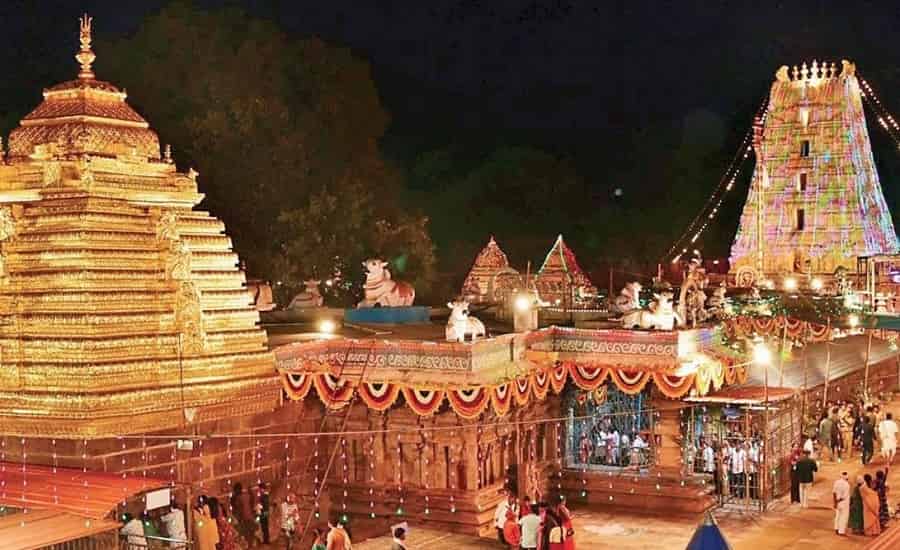
Practical Wisdom from My Mistakes
My journey to Mallikarjuna wasn’t without its hiccups—plenty of which could have been avoided with better preparation. Here’s what I learned the hard way, so you don’t have to:
Getting There:
- The Hyderabad-Srisailam road is better traveled by morning auto than night bus (I learned this when my bus broke down at 2 AM)
- If you’re coming by train, the Markapur Road station is closer than Srisailam station (a 2-hour auto ride vs. 3.5 hours)
- Ask at the temple office about shared jeeps from Markapur—they’re cheaper than private autos
What to Bring:
- A lightweight rain jacket even in winter (the mountain weather changes fast)
- Soft-soled shoes for the temple complex (the marble is slippery when wet)
- A small notebook for taking notes (photography is restricted in many areas)
- Small denomination rupees for offerings and donations (they don’t take cards)
Temple Etiquette:
- Women should wear traditional Indian clothing (salwar kameez or saree) for inner sanctum access
- Men must remove shirts before entering the main shrine (bring a spare t-shirt)
- Silence isn’t just requested—it’s expected in many areas (my phone ringing earned me stern looks)
- Offerings should be purchased from temple-approved vendors (outside flowers aren’t accepted)
Hidden Gems:
- The “Sound Garden” behind the main temple where wind chimes create natural music
- The early morning milk offering ritual at the Bhramaramba shrine (5 AM)
- The sunset viewpoint behind the temple that most tourists miss
- The weekly tribal market on Thursdays where you can meet local communities
What NOT to Do:
- Don’t try to negotiate with sadhus (they don’t accept money for blessings)
- Don’t eat non-vegetarian food within 5 km of the temple (it’s considered disrespectful)
- Don’t rush through rituals—observe quietly before participating
- Don’t assume all areas are open (some shrines have restricted access during certain rituals)
The Real Miracle of Mallikarjuna
After five days at Mallikarjuna, I realized something profound: the real miracle isn’t the ancient architecture or the dramatic location—it’s the living tradition that connects people across generations and backgrounds.
On my last evening, I sat with a group of pilgrims from different parts of India. There was a businessman from Mumbai, a farmer from Tamil Nadu, a student from Delhi, and an elderly couple who had been coming here for 50 years. Despite their different backgrounds, they shared a common language of devotion that needed no translation.
The businessman, Mr. Patel, told me, “I come here every year to reset my priorities. In the city, I measure success by money and power. Here, success is measured by how quietly you can sit and listen.”
As we watched the evening aarti (prayer ceremony), with oil lamps reflecting on the ancient stone walls, I understood what makes Mallikarjuna special. It’s not just a Jyotirlinga—it’s a living community where ancient traditions breathe through modern lives.
The head priest found me packing my bag the next morning. “You’re taking something with you,” he said, not as a question but as a statement. I thought he meant a souvenir, but he shook his head. “The mountain gives something to everyone who listens. What did it give you?”
I struggled to find words until I realized: Mallikarjuna had given me the understanding that true spirituality isn’t about grand gestures, but about attention to the present moment—the way the light hits a stone carving, the sound of water on stone, the feeling of cool marble under bare feet.
As I walked down the mountain road, I glanced back one last time. The temple glowed softly in the morning light, not as a monument to the past, but as a living presence connecting past, present, and future. The mountain’s whisper had become part of me, and I knew I’d carry it long after the journey ended.
FAQ
1. Where is Mallikarjuna Temple located?
Mallikarjuna Temple is located in Srisailam, Andhra Pradesh, on the Nallamala Hills beside the Krishna River.
2. Why is Mallikarjuna Temple famous?
It is one of the 12 Jyotirlingas of Lord Shiva and also one of the 18 Shakti Peethas, making it a highly sacred pilgrimage site.
3. What is the history of Mallikarjuna Temple?
The temple has roots in ancient Hindu scriptures, with mentions in the Skanda Purana and stories connecting it to Lord Shiva and Goddess Parvati.
4. What are the temple timings?
The temple usually opens from 4:30 AM to 10:00 PM, with specific timings for different rituals and darshan.
5. How can I reach Mallikarjuna Temple?
You can reach Srisailam by road from Hyderabad (around 215 km). The nearest railway station is Markapur Road, and the nearest airport is Hyderabad.
6. What is the best time to visit Mallikarjuna Temple?
The best time to visit is from October to March, when the weather is pleasant and ideal for darshan and sightseeing.
7. Is online darshan booking available at Mallikarjuna Temple?
Yes, devotees can book darshan and sevas online through the official temple website.
8. Are there accommodation facilities near Mallikarjuna Temple?
Yes, the Devasthanam provides guest houses and there are many hotels and lodges available in Srisailam for pilgrims.
9. What festivals are celebrated at Mallikarjuna Temple?
Major festivals include Maha Shivaratri, Karthika Masam, Ugadi, and Dasara, attracting thousands of devotees.
10. Can non-Hindus visit Mallikarjuna Temple?
Yes, non-Hindus can enter the temple premises, but entry into the sanctum is restricted only to Hindus.

